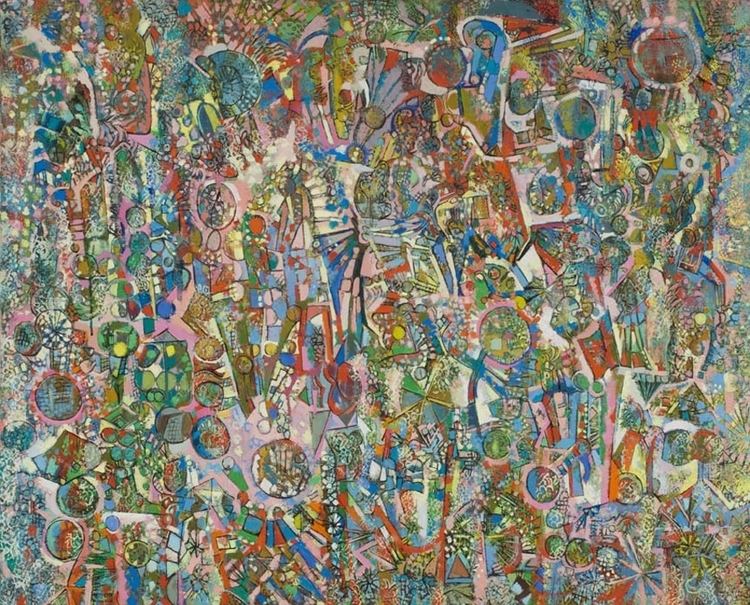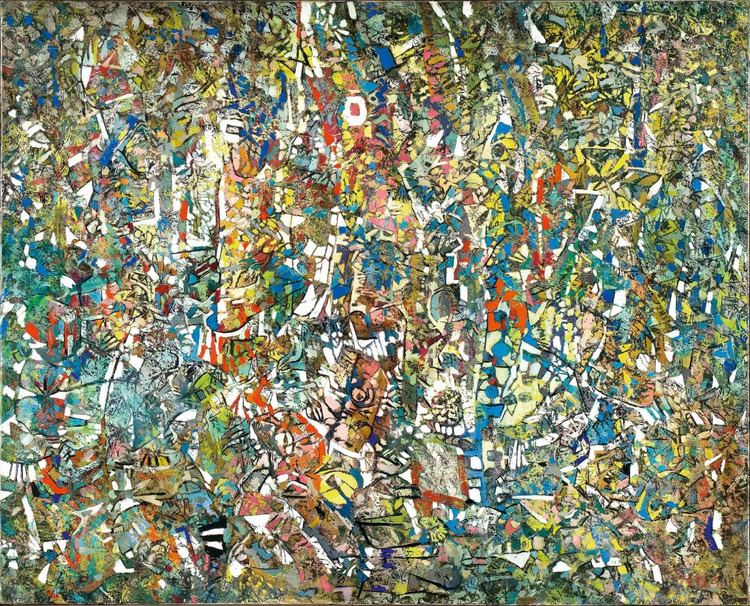Nationality French Name Endre Rozsda | Awards Copley Prize, 1964 | |
 | ||
Known for Painting, Drawing, Photograph | ||
Endre rozsda
Endre Rozsda (Hungarian: Rozsda Endre,; 18 November 1913, Mohács – 17 September 1999, Paris) was a Hungarian-French painter.
Contents

kmfa endre rozsda retrospective at the hungarian national gallery
Life

Rozsda was born in Mohács, south Hungary on 18 November 1913. At the age of 18 he started to paint in the school of Vilmos Aba-Novak. He had his first solo exhibition at the Tamas Gallery in Budapest in 1936, with great success. His work at this period mostly belonged to post-impressionism until he attended a concert at the Academy of Music, and heard Béla Bartók play his "Sonata composed for two pianos and percussions". "I was drunk from that music. I felt it criticizes my art. I understood that I am not my own contemporary." . In 1938 he settled in Paris and discovered surrealism, meeting Picasso, Arpad Szenes, Maria Helena Vieira da Silva, Etienne Hajdu, Giacometti, Max Ernst and Françoise Gilot.

After the German occupation of Paris he had to return to Budapest. In 1945 he was one of the founders of the European School of modern art in Hungary. After 1948 all non-official art forms were prohibited by the Communist regime, so Rozsda painted in secret and never exhibited. Fleeing from Communist repression in Hungary after the Hungarian Revolution of 1956, Rozsda returned to France.

He had many exhibitions at the Furstenberg Gallery (1957, 1963, 1965), where the preface to the catalogue was written by André Breton, who wrote "We have the chance to find out in the paintings accomplished secretly by Rozsda during the last few years, and which good fortune allowed him to bring with him into exile. Here is the supreme example of what had to be kept hidden if one wanted to survive, and, equally, of the inner necessity that had to be snatched from the vilest coercion. Here the forces of death and love are pitted against each other; everywhere under the magma of blackened leaves and broken wings irresistible forces are seeking a way of escape so that nature and the human spirit may renew themselves through the most sumptuous of sacrifices, that which the spring demands in order that it may be born."
In 1961, Rozsda participated in the International Exhibition of Surrealism at the Gallery Schwarz in Milan, Italy. The same year, his works were exhibited in memory of "L’Art Dégéneré" at the Alte Pinakothek of Munich and at the Museum of Decorative Arts in Paris.
In the 1960s he continued creating his work, transcending surrealism. In 1964 he received the Copley Prize (USA) from a jury composed of Hans Arp, Max Ernst, Man Ray, Darius Milhaud and Marcel Duchamp.
He became a French citizen in 1970 and moved to the Bateau Lavoir. He died in Paris on 17 September 1999.
